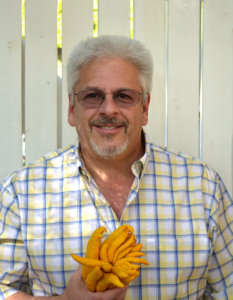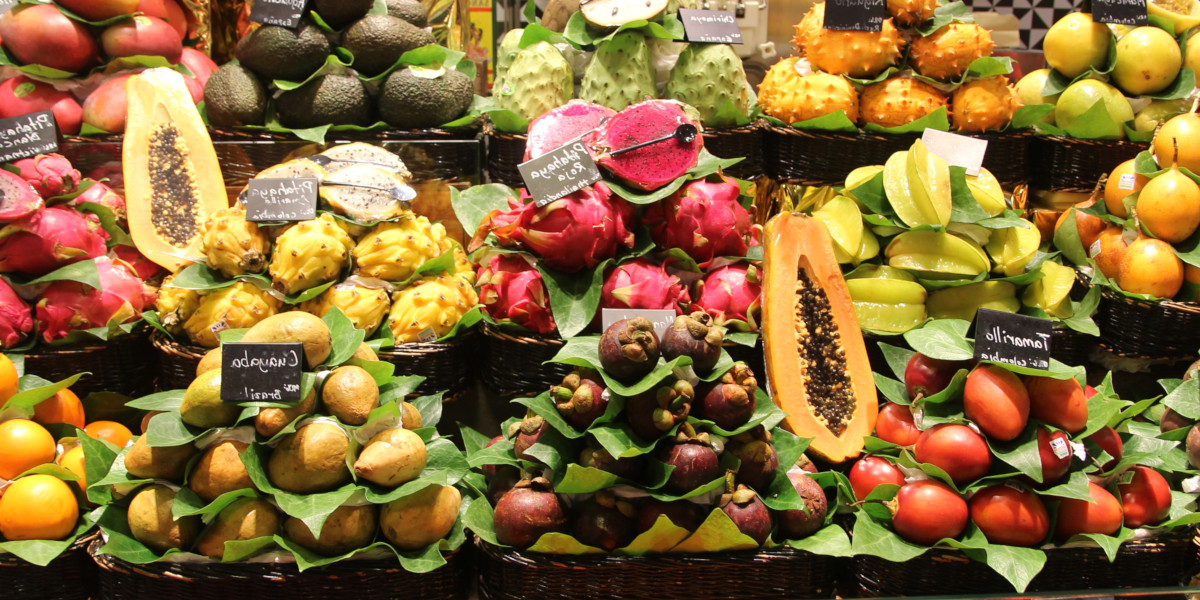Date/Time
Wednesday, February 5, 2014
7:00 pm - 9:00 pm
Add Reminder to Calendar: iCal Google Calendar
Location
Point Dume Club House
29500 Heathercliff Drive
Malibu, California
Tags: 2014, Bruce Blavin, Exotic Fruit Trees, Exotic Fruits, Meeting, Season 2013-2014
In February, Bruce Blavin presented on “Growing Exotic Fruits in Southern California.”
 Bruce Blavin has been a lifetime member of the California Rare Fruit Growers for 8 years and the Chairperson of the WLA Chapter for the past three years. His interest in gardening started around six years of age when he and his father planted 20 fruit trees in the 1960’s Woodland Hills. CRFG is devoted to educating, encouraging and sharing experiences with its members and the general public about growing rare fruit trees in Southern California. His personal collection of exotic fruit trees number more than 250 trees, and he conducts regular garden tours.
Bruce Blavin has been a lifetime member of the California Rare Fruit Growers for 8 years and the Chairperson of the WLA Chapter for the past three years. His interest in gardening started around six years of age when he and his father planted 20 fruit trees in the 1960’s Woodland Hills. CRFG is devoted to educating, encouraging and sharing experiences with its members and the general public about growing rare fruit trees in Southern California. His personal collection of exotic fruit trees number more than 250 trees, and he conducts regular garden tours.
Among some of his more exotic varieties of fruit trees include Japanese variety of persimmons, ice cream bean, mulberries, lychees, apriums, curry leaf, cherimoyas, atemoyas, papayas both tropical and mountain, kiwi, Ceylon gooseberry, Australian Finger limes, native American pawpaws and carambola (Star fruit). Bruce has also worked with a group of CRFG members each year to teach fruit tree grafting to high school students. Each student grafts their own apple trees. One of his passions in life is sharing his knowledge of growing exotic fruit trees. He loves to see the excitement in people of all ages when they revive old memories associated with tasting fruits from their youth.
Growing fruit trees involves “Zone Pushing.” It’s all a delicate balancing act. Some fruit trees require a certain number of chill days and growers are now trying to develop all sorts of low chill fruit trees that can grow in our region. Look for the low chill cherry that is now available in some nurseries.
Remember that you are in charge of your own garden. All plants need air circulation. With proper pruning and thinning to maintain trees at 10 to 12 feet high, you can maximize fruit production, often getting two yields of fruit per year. Bruce does not use pesticides, but he mulches and fertilizes. The healthier the plant is, the more they are resistant to diseases.
One of his favorite Loquats is “Big Jim.”
Hass Avocadoes often have one “on year” and one “off year.” They also like a lot of water.
Bruce grows 4 varieties of Jujubes, but there are some 80 varieties in all. When they are ripe they look like an apple and when they are dry they look like a prune.
Papaya Tree Nursery in Granada Hills is a good source for Mangoes and Papayas. It’s a spectacular nursery and well worth a visit.
Improved Meyer Lemons have thin skins and are orangey in appearance.
Bruce showed pictures of Mulberries and he likes the Pakistani white varieties. When ripe they are super sweet. He also spoke about the Strawberry tree, Kaffir Lime trees, the Java de Cava tree that produces flowers and fruit on the bark, Fig trees, Fuji apple trees, Lychee trees, Strawberry Guava, and Pomegranates. Bruce grows 7 different varieties of Persimmons and he prefers the Japanese varieties that can be eaten like an apple. They are less stringent than the other varieties.
People try to grow Dragon fruit here, but unfortunately, we don’t have Fruit Bats, the appropriate pollinators for the fruit to set. The flowers are open only for a short time around nine pm and Bruce recounted how one grower goes out at night with a flashlight on his forehead and hand pollinates his Dragon fruit.
Bruce also spoke about Passion fruit. Some people become addicted to it. It can be sweet or sour. There are over 200 varieties of Passionflower Vines, of which 80 produce edible fruit. “Frederick” is his favorite. But, Bruce warned, once the vine takes over it is can become invasive due to the very tenacious tendrils that can choke anything in its way.
He ended his talk with a set of slides illustrating how to cook Citron, “Buddha’s Hand.” This citrus fruit has no juice. It is grown for the citron skin that is used in fruitcakes.
In answer to a question about growing trees from seeds, Bruce noted that it is very difficult to grow trees from seeds. It is better to use rootstock and graft the “scion” of whatever tree you wish to grow on it. Bruce described how he grafted 27 varieties of apples on to one of his apple trees.
He encouraged us to learn more by attending the monthly meetings of the California Rare Fruit Growers (CRFG), the largest amateur fruit-growing organization in the world. Information about the local West Los Angeles Chapter and other chapters may be found at http://www.crfg.org/. The West L.A. chapter email address is: west_los_angeles@crfg.org.
Bruce also mentioned the educational value of going to local ethnic markets to learn more about exotic fruits.
